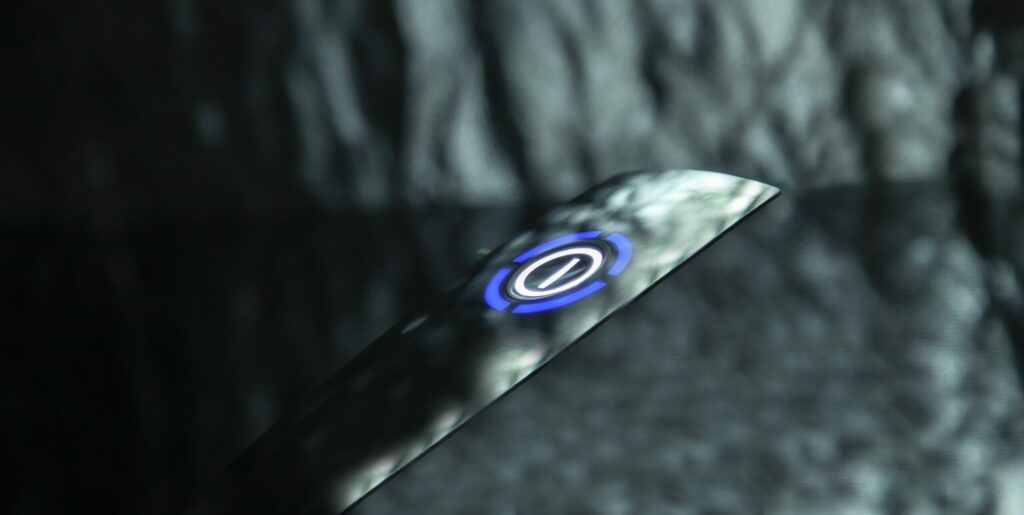Table of Contents
Operation with touch user interfaces is much less complex than with touch displays, and therefore offers decisive advantages for one-hand operation. The user interface can score particularly well when it comes to integrating operating functionality into the housing of your handheld device.
Simple one-hand operation with touch for handheld devices
Hand-held devices such as electric razors and toothbrushes, tools, medical devices or remote controls are usually held and operated with one hand. This results in very special requirements in terms of size, weight, ergonomics and operation.
One such special requirement that must be met for easy one-handed operation is “blind” operation. The operating area must be able to be felt and operated without looking at it. 3D shaped, continuous surfaces meet this requirement through finger guidance in the form of finger recesses.
With a simple touch control, touching usually means activating at the same time. However, touching the control element can already cause an unintentional activation. This is where gesture controls come in handy.
- Example:
Simply touching the touch switch does not activate it, only a swiping movement along the finger recess triggers the desired action.
The all-in-one circuit carrier
The heart of the realization of plastic electronic’s user interfaces is an all-in-one circuit carrier, specially designed for integration into all kinds of devices. This circuit carrier combines conductor tracks, the touch sensors, electronic components, a light management system for backlit controls or displays and the decor in a compact, less than 3 mm thin multilayer-stack.
This all-in-one circuit carrier can also be shaped in 3D and thus adapts perfectly to the special shape specifications of handheld devices.
In addition, other components and functions that should ideally be placed on the surface can be integrated into the all-in-one circuit carrier. In this way, proximity sensors, temperature sensors, pressure sensors, antennas, heating structures and the like can be ideally positioned close to the device surface.
Touch operation seamlessly and tightly integrated
plastic electronic’s user interfaces for one-hand operation can be seamlessly and tightly integrated into the housing of handheld devices. For this purpose, the circuit carrier is connected to the rest of the housing by gluing, welding or injection molding (film insert molding).
Which method is to be given preference depends on the one hand on the requirements, such as the required mechanical robustness or the tightness of the housing. On the other hand, economic aspects will have to be taken into account. An injection molding solution causes high initial costs due to tool construction and automation, which can only be amortized from a certain number of pieces. An adhesive solution is quick and easy to implement, but causes comparatively high unit costs.
Summarized the advantages of plastic electronic’s touch user interface for one-hand operation of handheld devices
- In terms of layout, form and feel, the user interfaces are always developed specifically for the respective device and the intended one-hand operation. So the one-hand operation is very simple, intuitive and blind to execute.
- The technology of the compact all-in-one circuit carrier enables production of thinner, lighter and 3D shaped user interfaces.
- Depending on the requirements, the circuit carrier is seamlessly and tightly integrated into the housing of the hand-held device. In this way, the devices can also be used in harsh environmental conditions and are easy to clean.
Tips for designing the user interface
If you now want to know how you can best design the user interface for your individual one-hand operation, then simply download our free plastic electronic Design Guide. You will find valuable and practical information in it.
Example: User interface for hand-held devices in medical technology
Together with the customer terraplasma, we have developed a touch user interface for the medical technology product plasma care®. In addition to the usual requirements for handheld devices, like one-hand operation e.g., the customer paid particular attention to the surface properties, which must be taken into account for a product in medical technology. This challenge was solved by applying a special hard coat to the user interface.




